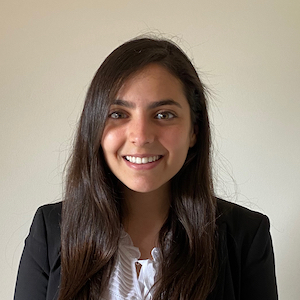
Maggi Kreisheh

Stephanie Silva

Adhithi Kesari
 Maggi Kreisheh |  Stephanie Silva |  Adhithi Kesari |
Kreisheh, Maggi, Silva, Stephanie, Kesari, Adhithi
Faculty / Advisor: Wang, Steven, Ford, Brian
University of Pennsylvania School of Dental Medicine, Department of Oral & Maxillofacial Surgery/Pharmacology
The purpose of this study was to evaluate the impact of COVID-19 on the anxiety levels of 3rd and 4th year dental students providing care in Penn Dental Medicine (PDM)’s oral surgery clinic during the COVID-19 pandemic. COVID-19 is an infectious disease caused by the novel coronavirus, which affects the upper and lower respiratory systems. This virus was first identified in the end of 2019, and by March 2020, the World Health Organization declared a global pandemic. This pandemic and the accompanying shutdowns worldwide have had profound psychosocial and economic impacts, ranging from a major economic collapse to the propagation of anxiety, depression, and fear of the unknown among many individuals. There is minimal knowledge about anxiety of individuals providing dental treatment in the midst of a pandemic, inspiring the aim of this study.
MethodsThis was a cross-sectional study collecting the feelings and perceptions of 3rd and 4th year dental students at PDM using an electronic survey. The voluntary survey had two components – the first was the Generalized Anxiety Disorder Questionnaire (GAD-7), and the second was a COVID-19-specific questionnaire. To ensure anonymity, no identifying information was used for data collection. The results were stored in a HIPPA compliant, encrypted virtual server at PDM.
ResultsBased off of the GAD-7 interpretation guide, 85% of the participants had minimal to mild anxiety about dental school; 10% and 5% had moderate and severe anxiety, respectively. 43.3% reported anxiety specifically about providing dental care during the COVID-19 pandemic. 67.2% reported that they somewhat agree/strongly agree that PDM’s preventative measures currently in place are helpful. Finally, 69% felt obligated to attend dental school in the pandemic and wanted to be competent dentists. Results were reported with a 95% confidence interval.
ConclusionCurrently, PDM is making great strides to assess patients’ anxiety levels and tailor care accordingly. Our study provides additional data on anxiety from a provider perspective, including information on anxiety associated specifically with the pandemic and its sequelae; said data can aid PDM’s efforts to create initiatives to help students combat their anxiety, which in turn can help them become better care providers to their patients. The data of this study is cross-sectional, so one area for future research is conducting a longitudinal study to assess changing levels of anxiety as the pandemic evolves.